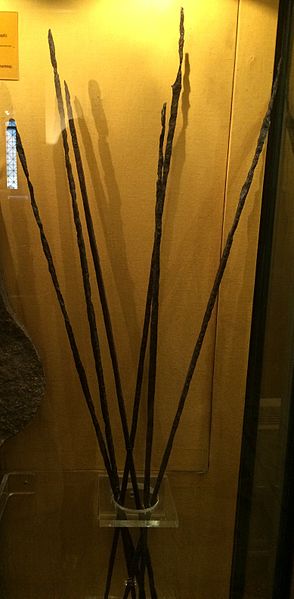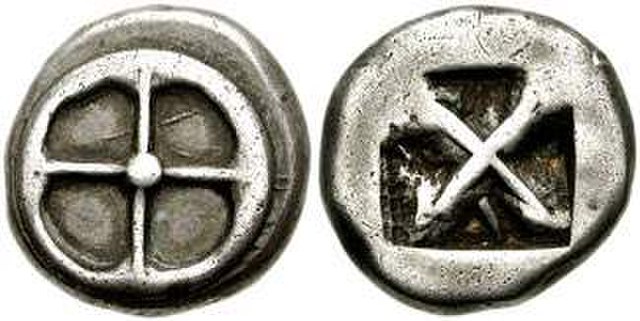The coinage of the Seleucid Empire is based on the coins of Alexander the Great, which in turn were based on Athenian coinage of the Attic weight. Many mints and different issues are defined, with mainly base and silver coinage being in abundance. A large concentration of mints existed in the Seleucid Syria, as the Mediterranean parts of the empire were more reliant on coinage in economic function.
Antiochus IV
Alexander Balas
Seleucus I portrait on Antiochus I tetradrachm
Bronze coin of Antiochus IV
In ancient Greece, the drachma was an ancient currency unit issued by many city-states during a period of ten centuries, from the Archaic period throughout the Classical period, the Hellenistic period up to the Roman period. The ancient drachma originated in the Greece around the 6th century BC. The coin, usually made of silver or sometimes gold had its origins in a bartering system that referred to a drachma as a handful of wooden spits or arrows. The drachma was unique to each city state that minted them, and were sometimes circulated all over the Mediterranean. The coinage of Athens was considered to be the strongest and became the most popular.
Above: Six rod-shaped obeloi (oboloi) displayed at the Numismatic Museum of Athens, discovered at Heraion of Argos. Below: grasp of six oboloi forming one drachma.
Athenian silver didrachm of "heraldic type" from the time of Peisistratos, 545–510 BC. Obverse: Four-spoked wheel. Reverse: Incuse square, divided diagonally.
Greek drachma of Aegina. Obverse: Land Chelone / Reverse: ΑΙΓ(INA) and dolphin. The oldest Aegina chelone coins depicted sea turtles and were minted ca. 700–550 BC.
Silver tetrobol (4/6 of drachma) from Massalia. Obverse: Artemis wearing stephane. Reverse: ΜΑΣΣΑ[ΛΙΗΤΩΝ] (of Massalians), lion standing right.








![Silver tetrobol (4/6 of drachma) from Massalia. Obverse: Artemis wearing stephane. Reverse: ΜΑΣΣΑ[ΛΙΗΤΩΝ] (of Massalians), lion standing right.](https://upload.wikimedia.org/wikipedia/commons/thumb/0/01/Massalia-21.jpg/640px-Massalia-21.jpg)